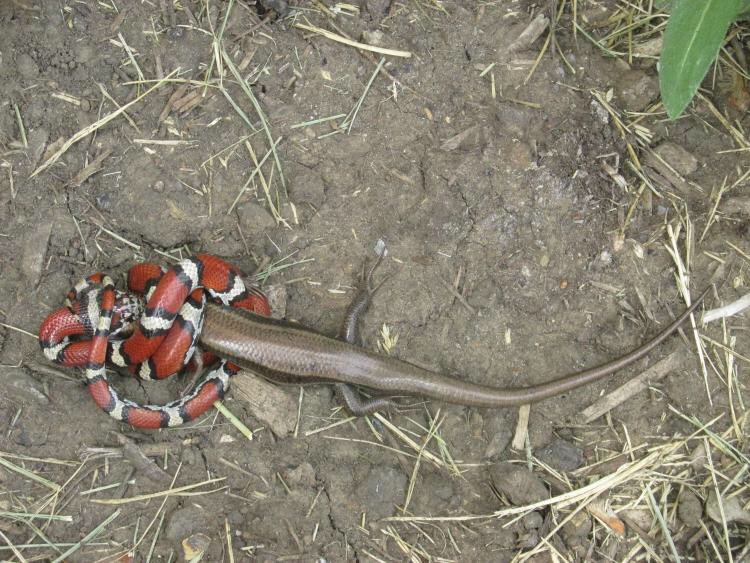

All snakes are cold-blooded, which means that they do not produce their own body heat. Learn more about snake safety tips and snake bite treatment at /species/eastern-massasauga-rattlesnake. Simply leaving snakes alone and using care when walking in natural areas will prevent nearly all bites - these creatures do not seek confrontation with humans, and accidental bites are rare. A bite from Michigan's one venomous species, the Massasauga, should get prompt medical attention. The amount of venom injected in a bite varies, depending on the angle and force of the strike and the supply of venom available. A rattlesnake's fangs are hollow and function like hypodermic needles to conduct venom into the body of its prey. Venomous species have these same recurved teeth, as well as enlarged teeth for injecting venom. Non-venomous snakes have tiny, recurved teeth that are useful for holding and swallowing prey. This is possible due to flexible connections between many of their skull and jaw bones and stretchable skin, which allows them to swallow prey larger than their heads. The larger species take larger prey, such as frogs, rodents, birds, or other reptiles. 
The smaller Michigan snakes feed on invertebrates such as worms, slugs, or insects.
#Westeen milksnake skin
The outer skin covering is shed and replaced several times during the year and shed skins are good clues to the presence of secretive snakes. A snake's dry and scaly skin provides protection as they move over rough or prickly terrain. This sense of smell assists the snake in finding food and identifying potential mates or enemies. Snakes smell with their tongue! Odor particles are picked up by the tongue and deposited on a special organ in the roof of the snake's mouth which then sends information to the brain. Snakes hear by picking up vibrations through their skull and jaw bones. Snakes do not have eyelids! Their eyes are covered by a protective transparent scale. Reptiles depend on the outside environment for body heat because they do not produce it internally. 
Reptile young are hatched from shelled eggs or born alive and are essentially miniature versions of their parents. Snakes belong to the reptile family along with turtles, lizards, crocodiles, and alligators.







 0 kommentar(er)
0 kommentar(er)
